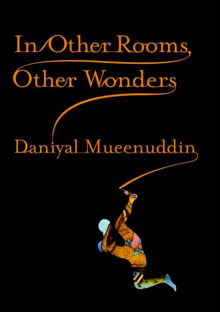
- Hardcover: 256 pages
- Publisher: W.W. Norton & Co.; 1 edition (February 1, 2009)
- Language: English
- ISBN-10: 0393068005
I first came across Daniyal Mueenuddin's stellar writing when the New Yorker published his story "Nawabdin Electrician" in the July 2008 issue. So intrigued was I with the protagonist Nawabdin, Mueenuddin's lyrical writing and his ability to bring Pakistan and its people into our homes that I hungered to read more from him. Fortunately I didn't have to wait long, in February this year Norton published his first book of short stories titled "In Other Rooms, Other Wonders" and I am happy to say that Mueenuddin is not a one-story wonder...I have enjoyed reading all of the eight stories in this volume, which is saying a lot because I have read other books of short stories and there have always been a couple that I didn't care to finish..not this time!
The central figure of In Other Rooms, Other Wonders is K.K. Harouni, a rich landlord in the Punjab area of Pakistan, though he figures as a protagonist in only one of the eight interconnected stories. The others focus is on peasants, servants, drivers, land managers, privileged Westernized children in an upstairs-downstairs sort of theme
The book opens with "Nawabedin Electrician" but it is "Saleema", the second story which captured my heart and still refuses to let go. In "Saleema", Mueeneddin takes us into the servant quarters of a rich landlord and shows us how even in the kitchen there is a pecking order based on clan and god forbid you come from a clan which is not respected (Saleema came from the Jhulan clan of blackmailers and bootleggars) you are destined to be everybody's doormat. It is sad because Saleema has nothing but sexual favors to offer the menfolk to get ahead and when even that is gone, she is back to square one. What hope is there if you are never allowed to shrug off the heavy mantle of tribe or clan?
Provide, provide, is another excellent story of a small time landlord, Chaudry Jaglani, from Dunyapur, a place along the Indus river. Being an opportunistic man Jaglani manages to increase his lands steadily and become quite active in politics too. However, the story isn't just about him but rather his love (always to be confused with passion) for a servant girl named Zainab and how his love for her ruins them both.
As with the previous stories, I liked how the landscape is such an integral part of the story and enjoyed Mueenuddin's evocative and pastoral descriptions of "peasants bringing back their buffaloes from watering at the end of the day...the heavy bells hanging from the animals' necks making a mournful hollow gonging..." brought back hazy memories of warm summers in the villages of my country!
Perhaps this might be a good time to mention that Mueenuddin is the son of a Pakistani father and American mother and after completing boarding school in Massachusetts, returned to Pakistan at the age of 23 to help his aging father to safeguard some ancestral property that was in danger of being taken over by unscrupulous managers. The seven years he spent on the farm provided the fodder for some of the stories in this book.
"About a Burning Girl" made me wince because it shows you how corruption has come to play such a huge role in the sub-continent. It seems to me that justice can never be had unless you have the mullah to pay for it. This story also reminded me of Mueenuddin's flair for description, especially strong when describing the landscape or one of his characters:
"He wore a battered white skullcap, soiled clothes, a sleeveless sweater and shoes with crepe rubber soles, worn down to one side, which gave each foot a peculiar tilt. The deep lines on his face ran in no rational order, no order corresponding to musculature or to the emotions through which his expressions might pass, but spread from numerous points. The oversized head had settled heavily onto the shoulders, like a sandcastle on the beach, after the sea has run in over it." pg 106
"Our Lady of Paris", "Lily" and "A Spoiled Man" focus on urban Pakistan and while they are captivating in their own way, I preferred the stories set in rural Pakistan. Big cities don't lack for quirky tales or complex characters, but small towns and villages feel more accessible, the characters more colourful, the stories richer.
You can read some of Daniyal Mueenuddin's stories on the web...here are the links:
Nawabdin Electrician
In Other Rooms Other Wonders
A Spoiled Man






